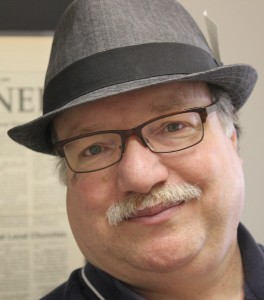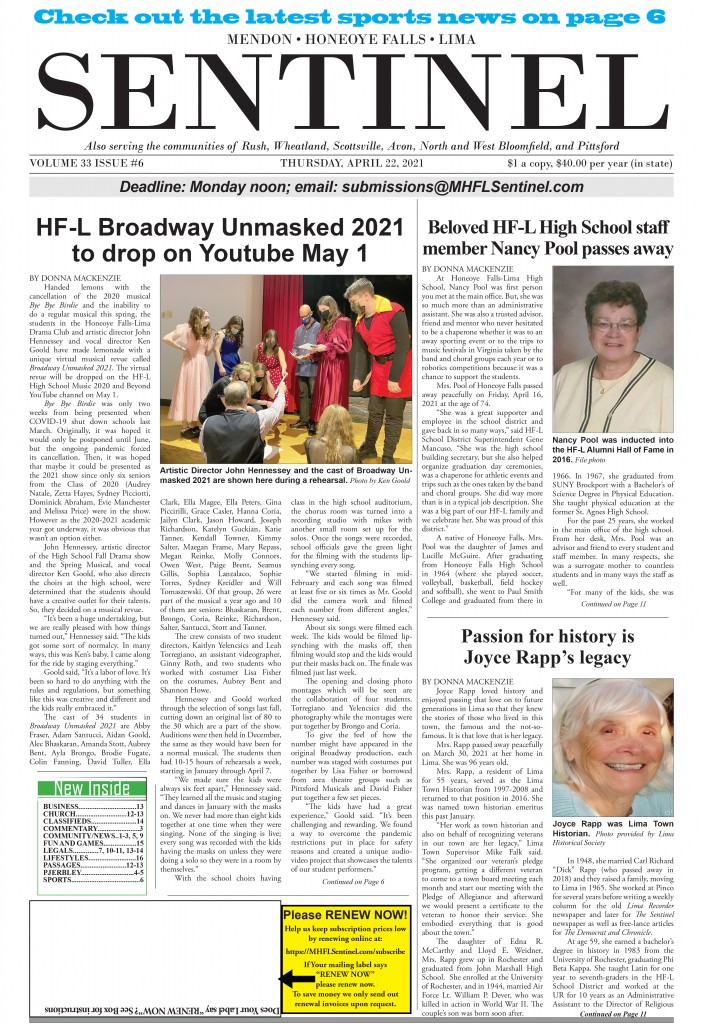BY JENNIFER CROWLEY
Following the school shooting in Parkland, Florida that left 17 people dead, the Wheatland-Chili Central School District held a community meeting to share information around the District’s safety plans and security procedures.
The March 6th meeting was hosted by Wheatland-Chili Superintendent of Schools, Deb Leh, and featured principals Margaret Wright (T. J. Connor Elementary) and Eric Windover (Middle/High School) as well as the District’s Director of Facilities, Cindy Kwiatkowski. Deputy Sean Mayo, the newly hired School Resource Officer, district security specialist Greg Dunn, and contracted security resources from both Monroe 2-Orleans BOCES and the Genesee Valley Educational Partnership rounded out the panel.
The takeaway message from the session was that Wheatland-Chili takes the safety of its staff and students seriously. The District’s safety plan is reviewed on a regular basis (the last update was in September 2017) and conforms to the Used Building Level Emergency Response Plan Template. This was developed by the New York State School Safety Improvement Team and features “standard” components that each school plan must address. This consistency is important because until a year ago, a “school safety plan” could mean many different things and have high variability. When first responders are unsure of where to park or where the correct entrance is, efforts to intervene in a crisis are slowed down when seconds of time truly matter.
Dr. Leh assured the audience of about 25 parents and community members that all school staff are trained to activate and implement the safety plan in the event of an emergency.
The Superintendent also shared some of the approaches the school is employing to reduce the possibility of a serious or violent incident involving students. The University of Rochester Medical Center provides the Wheatland-Chili system with mental health support in the form of coaching and behavioral expertise to teachers and other staff. Additionally, the District is engaged with The Children’s Institute which works with community agencies and schools to strengthen the social and emotional health of children, and Partners in Restorative Initiatives, which teaches the use of restorative practices for building relationships.
When it comes to student or parental input on matters that could be material to the safety of the schools and students, Dr. Leh reminded attendees that the District subscribes to The Safe School Helpline (www.safeschoolhelpline.com, call 1-800-418-6423, extension 359 or text 66746 and then type “TIPS”). This Helpline is an easy, anonymous way to provide information around a potentially serious matter.
As for the presence of security personnel in the school environments, both schools have these visible resources. Deputy Mayo’s role is intended to improve student perceptions and interactions with law enforcement personnel. The Deputy focuses his efforts on building strong relationships with teachers and students while also learning the physical layouts of both buildings along with student personalities. He does not get involved with disciplinary situations as Greg Dunn might at the high school. Dunn is also responsible for checking the status of doors and locks during the school day and also monitors camera footage (interior and exterior).
As for other safety measures the District has implemented, think “defense and depth”:
- Annual staff training on school safety procedures
- A forthcoming and revised “Code of Character, Conduct and Support”
- A total of 12 fire and lockdown drills (as required by the state)
- Card reader access to doors
- The presence of marked police and safety vehicles
- Established visitor protocols around building entry and access
One of the more interesting measures that Wheatland-Chili has gotten involved with – and the only suburban system in Monroe Country to do so – is “Stop the Bleed” training. This national initiative aims to save lives by teaching people what to do when confronted with life-threatening bleeding in the few minutes after 9-1-1 is called/before first responders arrive.
Stop the Bleed was introduced following the mass shooting at Sandy Hook Elementary. After that tragedy, the American College of Surgeons along with other experts created a protocol that would increase victim survivability. The idea was to give the basic tools and skills to “initial responders” – teachers with no medical training – who may otherwise have no idea how to manage traumatic bleeding from an accident or mass-casualty event.
The last part of the panel discussion featured the BOCES safety and security coordinator, Christopher Barrow. The former police captain became involved with school safety after retirement when he took a job working with a large county district in South Carolina. Given the size of the school system (Barrow worked in – multiple buildings with thousands of students) – he was exposed to training programs that resulted from investigations of previous mass shootings.
And now he imparts that knowledge to the schools here he supports.
Barrow may be a part-time resource for Wheatland-Chili but takes his role quite seriously. He was key in bringing the Rapid Responder program to the District. This program helps facility personnel and first responders collect, organize and securely disseminate critical information needed to prepare for and respond to any emergency. The system provides anywhere-access to critical data points of information including floor plans, site maps, aerial photos, interior and exterior facility imagery, hazardous material locations, utility shut off instructions, police and fire tactical response plans, facility emergency and evacuation plans as well as key contact information.
“When there is an incident unfolding and the Calvary arrive en masse, it is chaos. First responders are delayed from getting into the building. However with Rapid Responder, everyone knows where the staging areas are, where to park, where to enter, and this all saves vital minutes of time,” Barrow explained.
Barrow also shared some of the strategies he employs to keep security top-of-mind for teachers and other school personnel. “Somedays I’ll put on a hat, put my head down and try to enter the building. I want to see, can I get in? How far can I get without being detected? These exercises help us determine weak points in our physical security measures,” he said.
Staff training is another key part of ensuring a secure and safe environment for student learning. Barrow talked about the tabletop drills the staff work through each year, giving a specific but hypothetical incident to see and hear how the staff would work through it. These have become more “lightning round” in nature of late with Barrow grabbing the first three people he sees in the hallway to talk through incident response. “It’s great the principals are here tonight but nothing ever happens in the principal’s office. It’s usually the cafeteria, the gym, the hallways or the front of the school. This is why everyone needs to be trained on safety and security, because anybody could be a responder.”
For any parents or community members interested in reviewing the details of Wheatland-Chili’s safety plan, it is available on the District website at https://www.wheatland.k12.ny.us.






